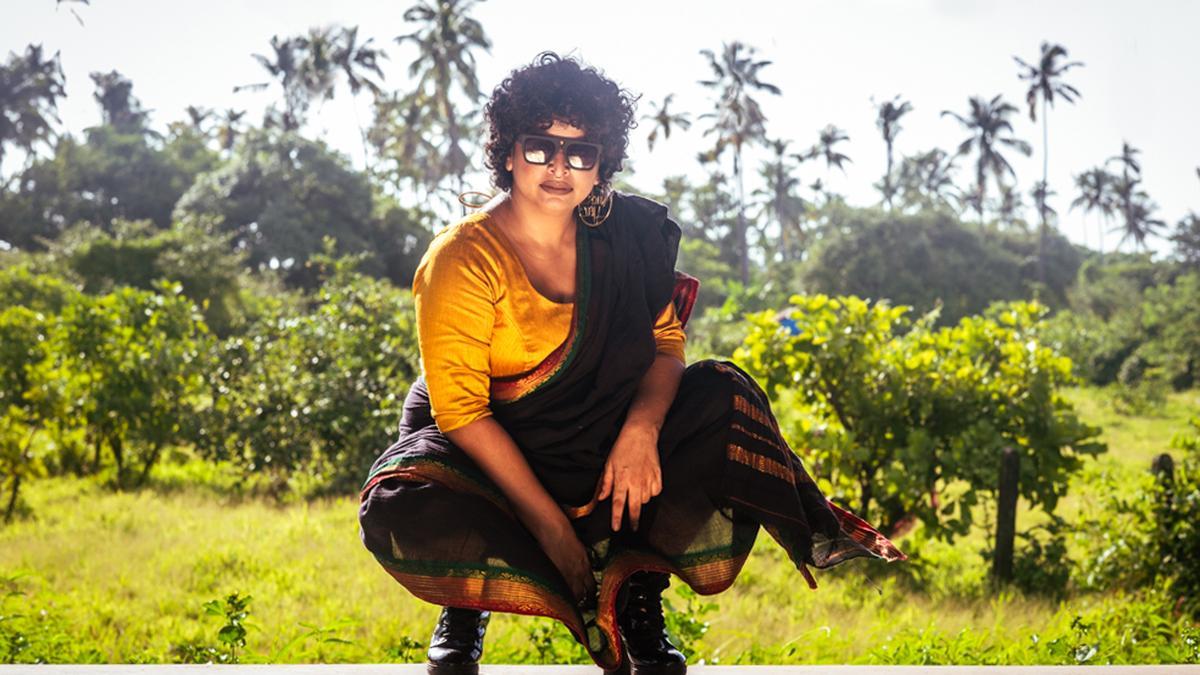
The Madras Players’ latest production, Kamalakshi, concluded to roaring applause as the theatergoers were met with an extraordinary stage setup: an intricately designed temple, brought to life through the creative efforts of lighting expert Victor Paulraj and set designer Shanmugham. Sujatha Vijayaraghavan penned the engaging narrative, while P.C. Ramakrishna’s deft direction transported the audience to the late 19th century, unraveling the tale of Kamalakshi, a devadasi portrayed by Sumitra Nitin, and Sivaguru, her counterpart, a singer at the esteemed Tiruvarur temple.
The narrative commenced amidst the fervor of temple celebrations, the crowd pulsating with anticipation for Kamalakshi’s ‘Potukattu’ ceremony. This ritual was to inaugurate her into a year of dedicated service to the temple, a testament to her devotion and artistry. Draped in ceremonial attire, she captivated the audience with her arrival, her dance preceding the sacred palanquin of Lord Thyagesa of Tiruvarur. Her grace and beauty were not lost on the villagers, particularly ensnaring the attention of Sivaguru, a singer played by Sikkil Gurucharan, and Sugavanam, the local influential landowner.
As the play unfolded, other pivotal characters were introduced, including Kamalakshi’s mother Arvathamma, and her companion Neela. The audience was treated to two elaborate songs—’Tyagaraja yoga vaibhavam’ and ‘Theruvil varano’—echoing through the auditorium. The plot thickens, weaving the growing bond between Kamalakshi and Sivaguru, Sugavanam’s obsessive desire to become her patron, and Kamalakshi’s internal struggles against her mother’s pressures. Ultimately, her unyielding faith and love for Lord Thyagesa lead her to transcend her earthly existence.
Kamalakshi was a milestone in English theatre, especially distinct for integrating live music, dance, and drama. While Sikkil Gurucharan’s singing captivated the audience, his acting seemed to step out of his usual forte. In contrast, Bharatanatyam dancer Sumitra Nitin seamlessly embraced the role of Kamalakshi, her dance and expressions saturated with authenticity. That said, the leading characters demanded more profound development to capture their complexities fully.
Complementing the main cast, Anuradha Ramesh as the mother, Parur Ananthashree as the friend, Hyma Ramakrishna as the affluent woman, S. Ram as the Mirasdar, and Krithivasan as Sivaguru’s confidant, turned in commendable performances.
The meticulous portrayal of historical settings posed challenges. For instance, the modernistic depiction of Kamalakshi’s home, featuring a white couch and floral decorations, clashed with the temple’s authentic aesthetic. Further, the costuming, while generally careful, displayed inconsistencies, such as uniform dhoti-kurtas on all male characters, regardless of social status, and questionable choices like colored stoles over traditional angavastrams, and a Tiruvarur temple priest in a kurta.
Yet, despite the evident dedication poured into the production, certain elements fell short. The devadasi narrative, though aspiring to originality, inevitably drew parallels with the previously acclaimed Thillana Mohanambal, rendering Kamalakshi’s story somewhat antiquated. While the narrative imbued the protagonist with sympathy, it missed an opportunity for a more profound exploration into the nuanced life of a devadasi and her tribulations when juxtaposed with women from disparate walks of life.
Select scenes resonated deeply, such as when the affluent woman attempts to extend Kamalakshi’s tenure to protect her from the Mirasdar’s clutches. Another compelling moment was Kamalakshi’s poignant outcry, questioning the societal standing of her kin, which deftly touched on devadasis’ intricate lives.
The play’s denouement, linking Kamalakshi’s spiritual union with the divine, aimed to portray profundity. Nevertheless, the staging struggled to convey the anticipated depth of this transcendence. The story of Kamalakshi was an encounter with the blend of spirituality and human endeavor, but alas, the execution could not entirely do justice to this lofty spiritual motif.










